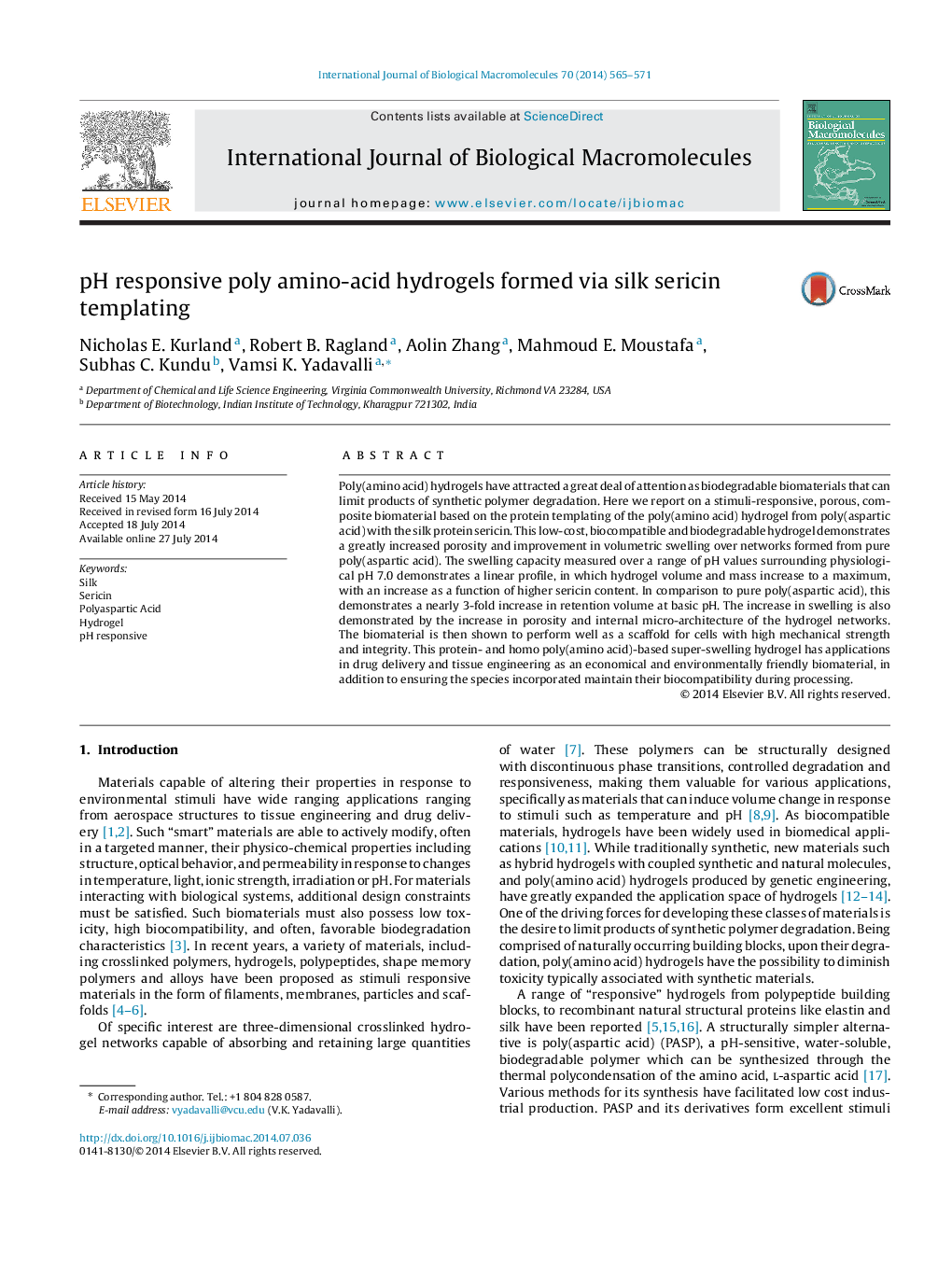| Article ID | Journal | Published Year | Pages | File Type |
|---|---|---|---|---|
| 1986378 | International Journal of Biological Macromolecules | 2014 | 7 Pages |
Poly(amino acid) hydrogels have attracted a great deal of attention as biodegradable biomaterials that can limit products of synthetic polymer degradation. Here we report on a stimuli-responsive, porous, composite biomaterial based on the protein templating of the poly(amino acid) hydrogel from poly(aspartic acid) with the silk protein sericin. This low-cost, biocompatible and biodegradable hydrogel demonstrates a greatly increased porosity and improvement in volumetric swelling over networks formed from pure poly(aspartic acid). The swelling capacity measured over a range of pH values surrounding physiological pH 7.0 demonstrates a linear profile, in which hydrogel volume and mass increase to a maximum, with an increase as a function of higher sericin content. In comparison to pure poly(aspartic acid), this demonstrates a nearly 3-fold increase in retention volume at basic pH. The increase in swelling is also demonstrated by the increase in porosity and internal micro-architecture of the hydrogel networks. The biomaterial is then shown to perform well as a scaffold for cells with high mechanical strength and integrity. This protein- and homo poly(amino acid)-based super-swelling hydrogel has applications in drug delivery and tissue engineering as an economical and environmentally friendly biomaterial, in addition to ensuring the species incorporated maintain their biocompatibility during processing.
Graphical abstractFigure optionsDownload full-size imageDownload as PowerPoint slide
